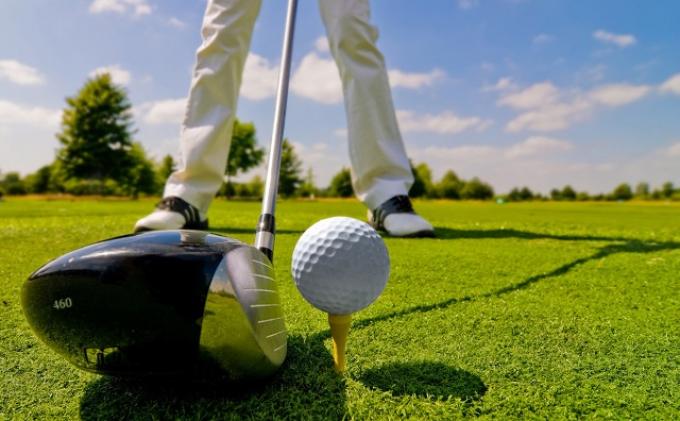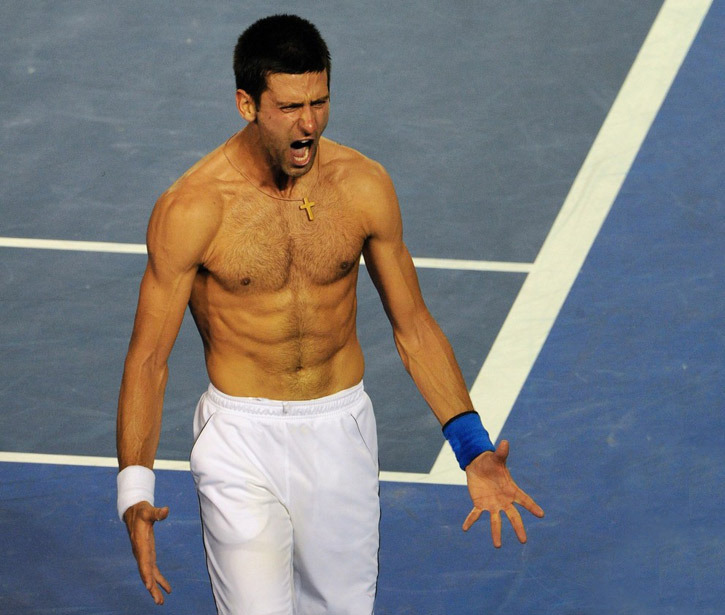Ever wonder why most people eat so much alike? Milk and cereals for breakfast, a soup and a sandwich at lunchtime, and, with luck, a slightly more balanced dinner of meat or fish, rice and some vegetables? What about those mid-morning and/or afternoon coffee and toast snacks? Crackers? Cakes and sodas? Cereal bars? Do you think this is a coincidence? Of course not, this is no coincidence!
This only happens this way because that is how you were taught to eat. Maybe this is the way your parents eat. Perhaps this is the way your wife, husband or partner eats. Maybe this is the way your friends and/or co-workers eat. Maybe this is the way your teammates eat. In fact, people do not even realize if what they are eating is appropriate or not for our physiology and genetics, if it improves or worsens health, if it improves or worsens performance, they eat this way because this is the eating pattern that they have been following for many years, and these were the habits they have ingrained.
In the last article we covered several reasons why golfers neglect nutrition, one of the aspects that can most influence their performance on the golf course. Interestingly, most golfers are more concerned with top-of-the-range clubs and new accessories than the foods they eat. And that is why today I will present five reasons for you to improve your diet.
Think about this for a while. If you knew that eating and/or supplementing in a certain way would: 1) reduce your fat mass; 2) increase your muscle strength; 3) improve your bone health; 4) enable a faster recovery; 5) increase your distance from the tee; 6) improve your mood; 7) reduce feelings of anxiety and anger; 8) improve your concentration and creativity; 9) improve virtually any known health marker and 10) improve your performance in training sessions and/or competition, would you be willing to eat that way? Given this short list of benefits I think it would be worth a try. Stay with me.
- Eating well will improve your body composition
Your total body weight is the sum of your lean mass and your fat mass. Lean mass consists of muscle mass, organs, bones, blood and skin. Your fat mass is basically all the fat that has accumulated in the body. For an individual to be considered athletic, he or she needs to maintain a good ratio between lean mass and fat mass. And golfers should be no exception. By this I do not mean that all golfers need to have Cristiano Ronaldo’s abs, what I mean is that under normal circumstances excess body fat has no benefits (unless you are a sumo wrestler in the spare time). Excess body fat will affect the efficiency of your swing, your mobility and your rotational power, meaning that you will have greater difficulty moving your body when you carry excess fat. The more fat you have, the more energy you have to use to move your body – the fat will “steal” power from your swing. So, it’s not the fat tissue that will give you power, it’s your muscle tissue!
- Eating well will improve recovery
If you are seriously committed to improving your game, you know you need to practice (and a lot!). According to experts, some professional golfers can hit 600 balls a day including chips and putts. And to perform all these swings you need muscle strength and power, meaning you need to do some kind of work in the gym! If the body is not prepared to cope with this type of stress in a regular basis, injuries and pain will begin to rise. If you often end your golf training sessions sore, if you notice fluctuations in motivation, if you can no longer hit balls in a coordinated manner, if you notice reductions in appetite, and if you are awake at night despite training a lot, it is very likely that your recovery is not being optimized. Muscle damage, Central Nervous System fatigue, and over-reaching are all common symptoms of many sports, but golfers tend to ignore these things. Although golf is not as physically demanding as other sports, the fact is that the daily training volume to which the body is subjected is large and this will make nutrition a key part of recovery.
- Eating well will improve mood, concentration and focus
Any professional golfer on the PGA Tour and/or the European Tour is capable of winning any major event. But why do some stand out more consistently than others? Because, according to experts, those who excel are mentally unshakable. That is, their ability to turn off negative internal dialogue, to consciously relax the brain and to focus with unflappable concentration is impressive. Some consider this to be an innate skill. And it is indeed. But it can be trained! However, there is also a biochemical basis for this mental prowess. You should know that by providing the right nutrients, including nutritional supplements, at the right times, the physiological link between the brain and muscles can be strengthened. Such as focus and concentration. For example, by controlling your blood glucose levels with frequent meals and less dietary sugar, mood fluctuations and that feeling of low energy after lunch can be eliminated. Therefore, in addition to body composition and recovery, nutrition can strongly affect your mental game. With the right nutrients, concentration, neuromuscular efficiency and mood can be significantly improved. On the contrary, if you do not ingest good nutrients, fatigue will appear earlier and you will no longer be able to concentrate in the same way.
- Eating well will improve your health
When I am talking about health, I am not just referring to the absence of pain and/or illness, I mean a feeling of physical, emotional and mental well-being. To perform at the highest level, health needs to be optimized, so the definition of health I share with my clients/athletes includes: 1) a resilient immune system; 2) strong antioxidant systems that protect against free radicals; 3) good detoxification systems; 4) a good balance of bacteria in the gut; 5) a good balance of basic and acid foods; 6) low levels of inflammation in the body; 7) an ideal balance between fat mass and lean mass; 8) a good balance of fatty acids; 9) good insulin sensitivity; 10) high energy levels and 11) the ability to maximize mental and physical performance at any age. All of these health markers can be influenced by the foods we eat every day! Therefore, these nutritional strategies will not only help you prevent disease but also optimize your body function and perform at the highest level.
- Eating well will improve your performance in training and competition
It is not surprising to most of you to find that most nutrition on the golf course is poor, ranging from mixed sandwiches and beer, to sports drinks and “energy bars” (note: most of which are basically full of sugar and bad fats) with a seemingly healthy label. These foods are certainly not preparing you for noteworthy performances, I would even say that these foods will compromise your performance. For example, beer is a central nervous system depressant, reducing concentration and motor control. Sports drinks (e.g. Powerade), sandwiches (even wholegrain!) and “energy bars” will raise blood sugar levels, which is-apparently good because it leads to a quick energy rise, but it turns out to be bad because then we’ll also watch a rapid energy drop 45-60 minutes later. When blood sugar levels drop to a peak, mood worsens, focus and concentration decrease – and of course performance worsens!
To optimize your performance in training and competition, there are at least three things that are required. First, you must maintain good hydration, especially in hot and humid climates. Even a slight dehydration can reduce coordination and motor control. Secondly, you must control your blood sugar levels. This means that you should not eat sugar-rich foods, but foods that help keep your blood glucose levels stable. Third, you should resort to some nutritional strategies and/or supplements that help you increase focus and concentration. In short, don’t continue to depend on what they offer you in the golf course bar carts – probably the only healthy thing they have there is water!
Good strokes!
Pedro Correia
Whatever the sport, strength training, in harmony with various training factors (i.e., technical, tactical, physical and psychological) and training principles (i.e., overload, specificity, reversibility, heterochronism, specialization, continuity, progression, cyclicity, individualization and multilateralism) will endow the athlete with a complete set of tools in order to maximize performance.
In tennis, strength is used to generate speed, power and endurance. It is impossible to have agility, speed, power, a developed anaerobic system, and flexibility / mobility without optimal strength levels (Verstegen, 2003). Strength training is also critical to prevent injury. Because tennis is a sport that involves many repetitions of movements of unilateral features, it is conducive to developing muscular imbalances which significantly increase the likelihood of injury. In tennis, the highest incidence of injuries is in the shoulders and back, followed by injuries in the elbows, knees and ankles (Kibler & Chandler, 1994). Thus, specific strength training for tennis is essential to maintain or restore proper muscle balance.
Definition of Force
The definition of force based on its purely mechanical concept consists of any cause capable of modifying the state of rest or motion of a body, consisting of a vector with a given magnitude and direction. It is the product of mass by acceleration (F=m*a). Although this definition of force is unanimously accepted, it hardly illustrates the different components of muscle strength. That is, if we understand muscle strength as an essential component for the development of motor skills which consists of the ability to apply force to overcome resistance (O’Sullivan & Schmitz, 1998).
Why Strength Training in Tennis?
A strength training program in the context of tennis should aim at developing “highly innervated muscles with an explosive ability” so that players can serve with greater speed, so that they can put “more weight” on the ball (due to an improved use of ground reaction forces), so that they can cover more area on court (because they are more agile and fast), and so that they feel as if they “float” on the court the whole day and week (Verstegen, 2003). It is important though to dispel some myths regarding strength training, namely that this type of training will make players slower, less agile or tight. Only poorly designed strength training programs will lead to this. In fact, several studies show that amongst Olympic athletes, weightlifters are those displaying the highest levels of power and are second best (after gymnasts) regarding flexibility levels (Jensen & Fisher, 1979).
It has been well established that adequate strength training not only maintains levels of flexibility but can actually significantly increase them (Fox, 1984; Jensen & Fisher, 1979; O’Shea, 1976; Rash, 1979). Also, adequate strength training induces significant improvements in: work capacity; body composition (i.e., lean mass gains and loss of fat mass); energy efficiency; tissue growth hormonal secretion profile favoring protein synthesis (e.g. strength training induces growth hormone secretion and testosterone); posture; and muscle balance (Lamb, 1984; Stone et al., 1982).
Specifically in tennis, it has been shown that strength training strengthens the immune system (thus protecting the player from injury and illness), and is often pointed to have a positive psychological effect on players, since it appears to be coupled with an increase in levels of self-confidence during matches (Folkins & Sime, 1981; Tucker, 1983), as out of the game (Folkins & Sime, 1981).
The Various Types of Strength and Its Application in Tennis
- Strength endurance: the ability to produce force over time while resisting to fatigue. Good strength endurance levels allow the maintenance of proper form and a correct technical execution. Together with the static strength, strength endurance makes a sort of a basis for developing other types of strength training in tennis.
- Static strength: the ability to stabilize joint structures allowing better transmission of energy along the kinetic chain, i.e. without loss of energy. In tennis, this type of strength allows optimal use of force generated against the ground to subsequently transfer speed to the ball.
- Maximal strength: relates to the maximal force value during a voluntary contraction against an immovable resistance. It is mainly a strength assessment parameter and we can consider its absolute and relative measures (i.e. relative to body weight). For tennis, relative strength is more relevant than absolute strength because it has a direct influence on the player’s speed and agility. Strength Deficit (SD) should also be evaluated based on measures for Maximum Eccentric Force (MEF) and Maximum Isometric Force (MIF). The SD = MEF-MIF. If the SD > 25% for the lower limbs, and SD > 50% for the upper limbs, training should prioritize Rate of Force Development (RFD). If below these values, strength training should focus on hypertrophic and maximal strength methods.
- Power – the ability to produce the most amount of force in the shortest time interval. It includes:
- Starting strength (up to 250ms of the force / time curve) –expressed as the Initial Force Production Rate (IFPR) and reveals the ability to accelerate from a static position (i.e., velocity = 0);
- Explosive force (above 250 ms of the force / time curve) – expressed as the Maximum Force Production Rate (MFPR) and reveals the ability to accelerate to maximum force levels. It is one of the main indicators of performance in tennis. It corresponds to the phase of maximum acceleration during a given movement;
- Reactive force – force produced during muscle’s stretch-shortening cycle (SSC). The use of the elastic and reflex properties of the muscle present in the SSC influences the IFPR and the MFPR. Reactive force training (i.e., using muscle’s SSC) may contribute to increased acceleration capacity, that is, increasing IFPR and the MFPR, and consequently gains in power.
- Optimal Strength (Verstegen, 2003): the combination of the types of strength described above according to aspects inherent to the player and his/her performance, such as: age; capacities; style of playing; stage of development; type of surface on which they will play.
Table 1 specifies the ideal characteristics of strength training in tennis for the various stages of development according to the Long-term Athletic Development model (Balyi & Hamilton, 1999).
| Table 1. | |||
| Age | Characteristics | ||
| 6-9 Boys 6-8 Girls | Strength training should focus on exercises with body weight. It may include the use of medicinal balls (of adequate weight) in exercises of a playful nature. The strength gains at this age are mainly attributed to gains in motor coordination and neuromuscular activation. | ||
| 9-12 Boys 8-11 Girls | Strength training should be regular and lead to progressive improvements. At this stage, however, emphasis should be placed on motor learning and development. | ||
|
12-16 Boys 11-15 Girls | Strength training should be characterized by short sessions (less than 30 minutes) two to three times a week. The Peak Height Velocity (PHV) will determine the increase in volume and intensity of the loads. Critical periods for strength training will occur shortly after PHV for girls, and 12-18 months after PVA for boys. Basic Olympic lifts techniques should be introduced and mastered during the PHV. This can constitute an important training tool “in the box” for later development high levels of power, as well as preventing injuries and optimize adaptation to strength training. | ||
| 16-18 Boys 15-17 Girls | Strength training should be regular and lead to progressive improvements. Regular assessment of strength deficit should be made to determine if training should be more hypertrophy or RFD oriented. It should have a special emphasis on possible muscular imbalances due to the higher levels of intensity and volume related to tennis training and tournaments | ||
| Adulthood | The training should be regular and lead to progressive improvements. However, training should spot imbalances, inadequacies and weak points of the athletes in order to optimize performance in tennis in the long term. | ||
Conclusion
In short, a strength training program should consist of integration of stability and recovery / corrective exercises, together with strength work of both maximal and explosive characteristics, as well as court work focusing strength components such as speed, agility and power.
References
Balyi, I. & Hamilton, A. (1999). The FUNdamentals in Long-term Preparation of Tennis Players. In N. Bollettieri (Ed.). Nick Bolletieri Classic Tennis Handbook, (pp. 258-280). New York: Tennis Week.
Folkins, C. H. & Sime, M. E. (1981). Physical training and mental helath. Journal of Physiology, 36, 373-389.
Fox, E.L. (1984). Sports Physiology (2nd edition). Philadelphia: W.B. Saunders.
Jensen, C. R. & Fisher, A. G. (1979). Scientific Basis of Athletic Conditioning. Philadelphia: Lea & Fegiber.
Kibler, W. B. & Chandler, T. J. (1994). Raquet Sports. In F.Fu &D. Stone (Eds.), Sports injuries: Mecahnisms, Prevention, and Treatment. Baltimore: Williams & Williams.
Lamb, D. R. (1984). Physiology of Exercise (2nd edition). New York: MacMilan.
O’Shea, J. P. (1976). Scientific principles and Methods of Strength Fitness (2nd edition). Reading: Addison.Wesley.
O’Sullivan, S. B. & Schmitz, T.J. (1998). Strategies to improve motor control and motor learning. Physical Reabilitation: Assessment and Treatement (3rd edition) (pp.225-244). Philadelphia: F.A. davis.
Rasch, P. J. (1979). Weight Training (3rd edition). Duduque: Wm. C. Brown.
Stone, M. H., Byrd, R., Carter, D. et al. (1982). Physiological effects of short-term resistive training on middle-age sedentary men. National Strength and Conditioning Association Journal, 4, 5, 16-20.
Tucker, L. A. (1983). Self Concept: Afunction of self-perceived somatotype. Journal of Psycology, 113, 123-133.
Verstegen, M. (2003). ITF Strength & Conditioning for Tennis. In M. Reid, A. Quinn, & M. Crespo (Eds), Developing strength (pp. 113-135). London: ITF Ltd.


